Now almost every motherboard is equipped with a good built-in audio path, complete with a popular codec from Realtek. And yet they are not able to give such an audio signal quality that can be achieved using a discrete (separate) sound card. This is due to the fact that the hardware codec of the integrated card is located directly on the motherboard of the computer, because of which a little, but still deteriorates the performance of the device (due to the consumption of processor resources), electromagnetic interference is created. Not to mention the lack of a high-quality digital-to-analog converter, which is why its audio signal processing is performed using a hardware codec. The sound quality "at the exit" from this leaves much to be desired. The purpose of this article is to find out which manufacturer’s sound card is better to buy, to identify their main advantages and disadvantages.

Content:
Sound card which company choose
The first thing you should decide on is the purpose of the purchase. If the main task is in professional audio processing and audio recording, then you need to choose one type of audio card. The external boards from ASUS and Native Instruments deal best with this role.
Another thing, if the task is to improve the sound quality for listening to audio on a stereo system or in headphones. In this case, it makes sense to think about purchasing low-end models from Creative Labs or M-Audio.
Anyway, the main manufacturers of the sound card market are represented by brands:
1. ASUS
2. Focusrite
3. Creative labs
4. C-Media
5. M-audio
6. Native instruments
7. LynxStudio
The choice of the company will directly depend on the purpose of the purchase and budget.
If we are talking about professional multimedia equipment, then the undisputed leaders will be Creative and Asus. As a rule, sound cards of these companies have an integrated HD Audio system, which is much better than the notorious AC’97. This applies to both external and internal boards.
The best budget sound cards are models from M-Audio. Especially for home recording, connecting through the line input of a guitar or microphone. They have the perfect combination of price, quality and features. There is everything you need, without surplus. When it comes to external sound cards, they usually have a headphone jack, MIDI and instrument input / output.
Best Internal Sound Cards
The internal sound card is implemented as a separate board, which is installed directly inside the PC. They also include integrated ones, which are soldered together with the motherboard and are an integral part of modern computers. However, to replace such a fee will not work.
If you plan to buy an integrated audio card, then you need to focus on the characteristics of the device and features of the computer motherboard. It makes sense to install it for a stationary PC with an impressive “hardware”.
The internal card is an ideal solution if the purpose of the purchase is to achieve high-quality sound, but you do not need additional connectors, instrumental inputs. At your disposal will be a headphone jack and a line input. If we are talking about budget models.
LynxStudio AES16
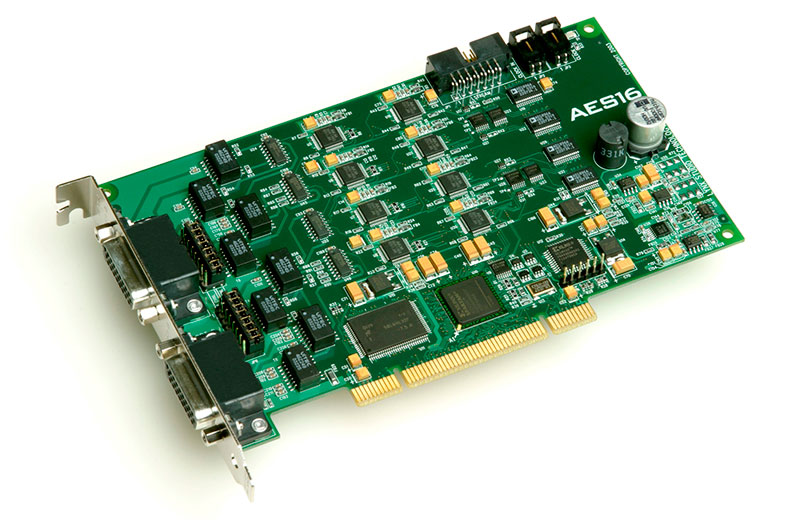
One of the best internal cards for professional use. Therefore, most often used in recording studios. Supports up to 16 channels of digital audio and all this in AES / EBU standard.
Another key feature of the card is the possibility of simultaneous use of up to four similar ones in one computer, which greatly simplifies the work in audio editors, allowing simultaneous recording of several tracks.
The main drawback is connecting through an already outdated PCI interface. Although for lovers of traditional sound recording it may seem insignificant. In addition, it provides some advantages. Sound delay is minimized. Therefore, the card is convenient to use for LIVE recordings and broadcasts.
Advantages:
- Support AES / SBU standard.
- Support up to 16 channels of digital audio.
- The possibility of simultaneous use of several such devices.
- Minimum sound delay.
Disadvantages:
- No AD / DA converter.
- Connection via PCI interface.
- High price.
- The difficulty with the selection of the motherboard, if you plan to use several similar cards.
ASUS Xonar DS
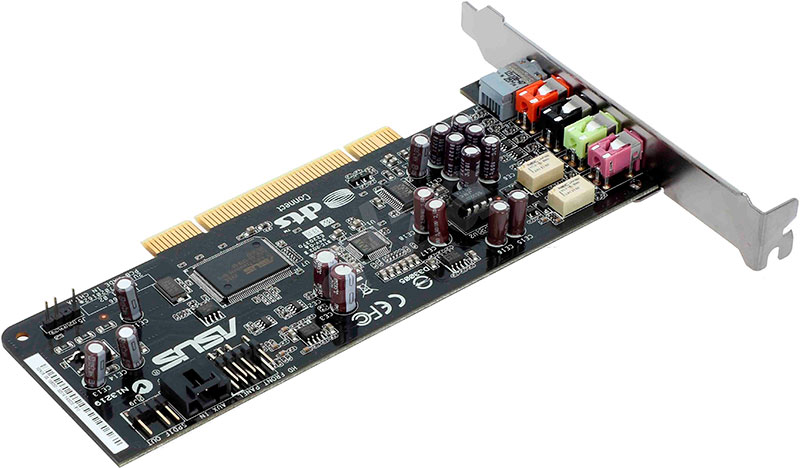
Internal sound card, one of the best among budget models. In this case, it can compete with the boards of the middle price segment. It features an increased frequency of the digital-to-analog converter, which can reach 192 kHz.
Thanks to this feature, the sound becomes clearer, without extraneous noise, which is especially noticeable when playing audio through a stereo system. Especially when it comes to AAC or FLAC.
The model has four analog connectors, has 8 analog ropes and an optical adapter S / PDIF because of which it can rightly be considered semi-professional. In addition, you can connect a 7.1 speaker system to it.
Advantages:
- Availability of an additional adapter for connecting a 7.1 format system.
- Good balance of medium, low and high frequencies.
- Ability to replace the amplifier.
- High frequency D / A converter.
Disadvantages:
- Despite the fact that the model is considered budget, its price can hardly be called low.
- Not the greatest opportunity to tune the sound signal.
- Few additional connectors.
- Connects through the PCI interface.
Creative audigy SE
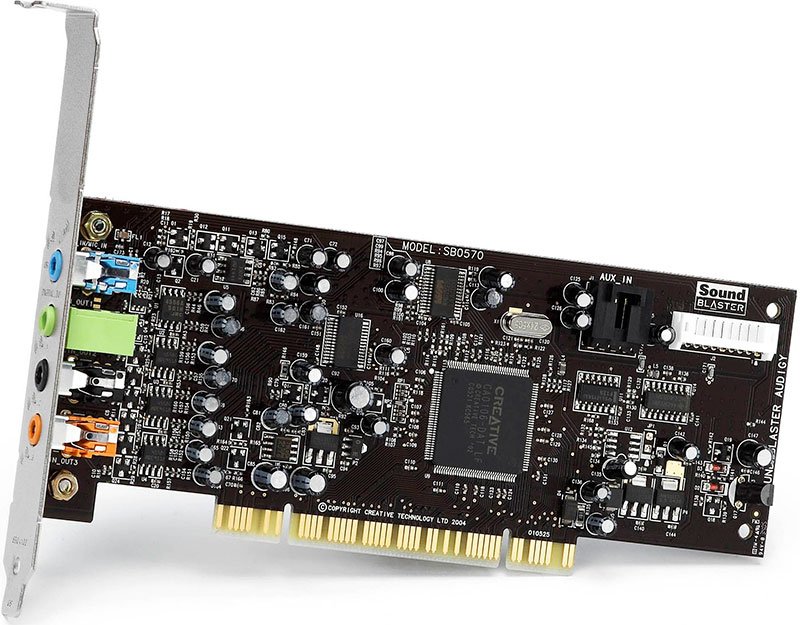
The ideal solution for owners of inexpensive audio format 5.1. The sound card is connected to the computer through a PCI interface, so there are no problems with its installation. This model is considered budget, so unlike the same ASUS Xonar DS, you should not rely on high-quality sound when listening to FLAC audio files. But the card has the support of six-channel sound, which is quite rare for low-end models.
Advantages:
- Low cost.
- Support six-channel sound.
- Support EAX effects.
- Quick installation.
- Support for 5.1 systems.
Disadvantages:
- One audio output.
- Low frequency digital-to-analog converter (about 96 kHz).
- Lack of optical and front entrance.
- There may be problems finding drivers for the latest versions of Windows.
- Connecting to a computer through a PCI interface.
Best external sound cards
Not every user is ready to install an internal card in his computer, moreover, they do not always meet all needs. External sound cards come to the rescue. As a rule, they are connected via USB. Mobile, easy to use and compatible with most devices. You can connect such a card to different computers and laptops.
Both budget and professional external sound cards, as a rule, have a number of additional features, inputs, settings. Therefore, they are convenient to use for recording.
ASUS Xonar U7
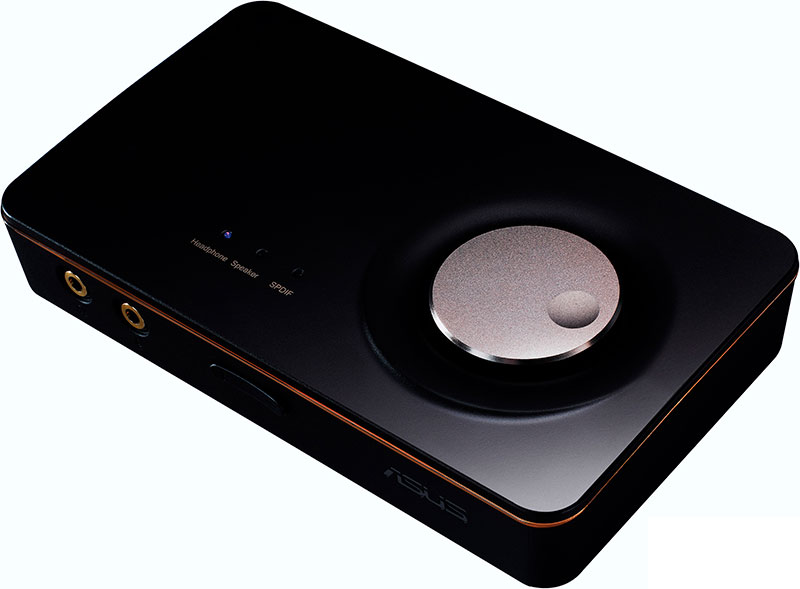
External sound card that connects to the computer via the USB interface. Works great with both 5.1 and 7.1 audio systems. The frequency of the digital-to-analog converter reaches a maximum value of 192 kHz, so that the output is clear sound without extraneous noise, which is especially noticeable on a 7.1 stereo system. and listening to FLAC files.
The card boasts the presence of five analog connectors, eight channels, and even an independent output for connecting headphones, which is quite a rare phenomenon among the models in this price segment.
Advantages:
- An independent headphone jack.
- Eight analog channels.
- High frequency D / A converter.
- Five analog connectors.
- The ability to adjust the balance of frequencies.
- Support for 5.1 systems. and 7.1.
- Connect via USB interface.
- High quality sound when playing FLAC files.
Disadvantages:
- High price.
- Sound delay.
- Weak preamp.
Focusrite Saffire PRO 40

Professional external sound card. It is connected via the FireWire interface, due to which it is particularly popular among sound engineers. Supports up to 52 channels, has at its disposal 20 audio outputs and inputs. This is quite enough for a full-fledged studio recording, high-quality mastering, mixing and processing of audio material.
Due to the presence of phantom power in each audio channel and the presence of a powerful preamp, the competitors in the Focusrite Saffire PRO 40 in this price segment simply do not.
Additionally, the card boasts the presence of virtual inputs, so that it can be used to route digital streams between different applications.
Advantages:
- Connection via FireWire interface.
- The presence of powerful preamplifiers in all 8 audio channels.
- High frequency D / A converter.
- Existence of two independent exits for connection to monitors.
- Included with the card is a professional recording software.
- Flexible routing signal.
Disadvantages:
- High price.
M-Audio Fast Track USB

Perhaps one of the most popular external sound cards. This budget model has long established itself among musicians of all levels and is rightfully considered one of the best in terms of price-quality ratio.
In the arsenal of M-Audio Fast Track USB connection via a modern USB interface, instrument and MIDI inputs, headphone output. Which, by the way, is independent, therefore the volume of the signal is regulated separately.
It is quite tolerable control to adjust the balance of frequencies and even the presence of phantom power. Thanks to a good built-in preamp, you can directly connect a microphone to the card.
Advantages:
- Two RCA connectors.
- Phantom power for the microphone.
- Nice preamp.
- The presence of instrumental input.
- Convenient management.
- Ideal value for money.
Disadvantages:
- Low frequency digital-to-analog converter.
- Few audio channels.
- Limited capacity to use.
Native Instruments Traktor Audio 6
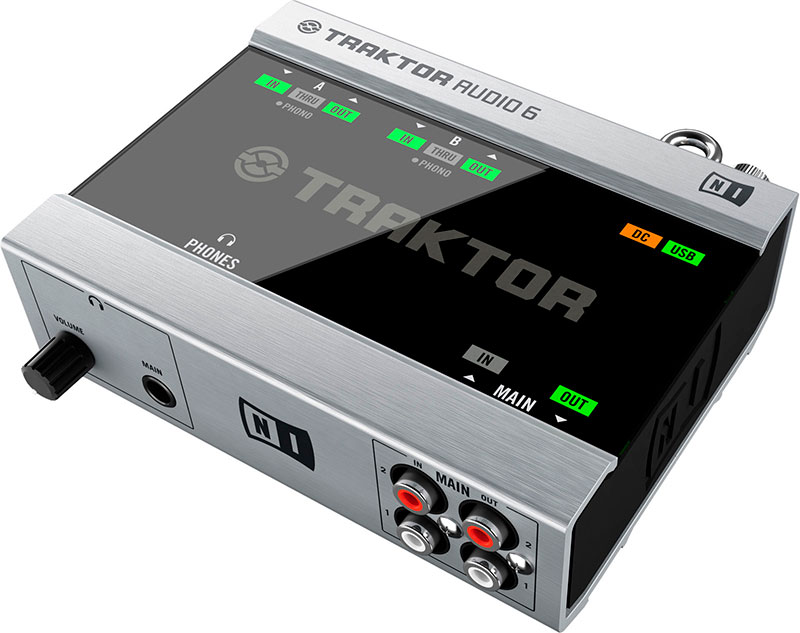
Professional external sound card. Enjoys special popularity among sound producers. Can be used to create a home DJ complex. It boasts an impressive filling, the ability to simultaneously connect to it up to three stereo sources, including a CD player to normalize the signal.
The card has three output channels, an independent headphone jack (the volume of the signal is regulated separately). Connecting to a computer via the USB interface, although this is not necessary.
Included with the sound card is a special device Direct Thru and power supply, so you can work with it without a computer or laptop. This is especially convenient for use in live mode. However, please note that you can not instantly load additional effects or samples to it without a computer.
Advantages:
- Durable case, powerful stuffing.
- The possibility of independent use without connecting to a computer or laptop.
- Minimum sound delay.
- Ability to connect via USB interface.
- Independent headphone jack.
- Multichannel.
Disadvantages:
- There is no special microphone jack.
- It may be difficult to connect to a computer.
What sound card to buy
Before you make the final choice, decide on the purpose of the purchase and budget. In addition, if you use a laptop, then buying an internal card will be at least stupid.Since you just can not connect it. Therefore, it is worth stopping at external cards with USB or FireWire interface
For use with a desktop computer, it makes sense to think about purchasing an internal card. It will be cheaper, but before buying, check for compatibility with the motherboard (this information can be found on the official website of the sound card manufacturer).
1. For professional sound recording, external or internal cards from ASUS are suitable, depending on your needs.
2. For music lovers and lovers of high-quality sound, you can recommend low-end models with support for 5.1 or 7.1 systems, depending on the stereo system, the connection of which is planned.
3. M-Audio Fast Track USB is the undisputed leader among budget models of external sound cards. An ideal choice for novice musicians, especially guitarists, because can be used as a replacement for a combo amp (in conjunction with VST plug-ins).
4. Native Instruments Traktor Audio 6 - can be recommended for purchase for professional use, especially if you are looking for a model that can be used independently of a computer (albeit with minimal functionality).
If you are still in doubt with the choice, then among the low-end models can choose the company M-Audio and Creative. Sound cards from ASUS, LynxStudio and Native Instruments will appeal to professionals. In addition, models of high price segment from the listed brands will differ only in additional functionality. Therefore, they can be equally used for standard recording, processing and mixing of audio material.
It will be interesting to friends too






